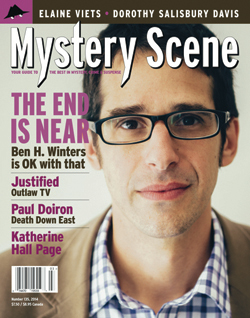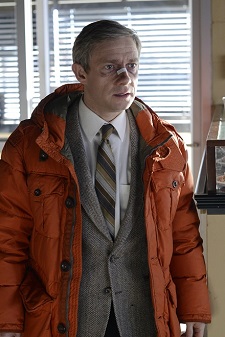
Beware the overlooked man.
The frustrated, inept, ignored man seething with unresolved violence day and night.
Beware this dormant volcano who one day erupts and cannot rein in his violent tendencies.
That describes insurance salesman Lester Nygaard, a sad sack of a man played to perfection by British actor Martin Freeman in the compelling and disturbing drama Fargo, airing 10 p.m. Tuesdays on FX.
For years, Lester’s diabolical nature has been submerged as he just tried to get through life, knowing that no one had any respect for him—not his wife, his brother, or his boss.
This 40-something man was still being bullied by his high school nemesis who now has brought in his lughead sons to continue the harassment of Lester.
Then one day, Lester has a strange encounter in the emergency room with a drifter named Lorne Malvo (Billy Bob Thornton). In a kind of Strangers on a Train meeting, Malvo, a remorseless killer, somehow encourages Lester to unleash his demons.
In a kind of Strangers on a Train meeting, Malvo, a remorseless killer, somehow encourages Lester to unleash his demons.
Before he knows what is happening, Lester kills his wife and witnesses Malvo’s murder of the police chief.
And there is no turning back in this Fargo.
Although the TV Fargo shares the same name as the 1996 movie, the same frozen rural Minnesota landscape, and droll dark humor, this version is not a continuation of that film by Ethan and Joel Coen, who are listed among the executive producers. Most of the story doesn’t even occur in Fargo, a kind of joke.
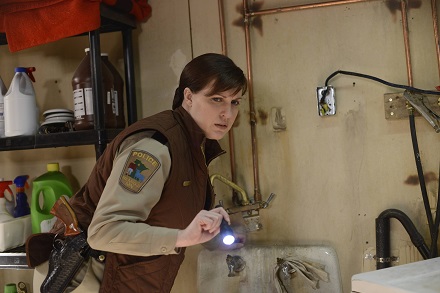
The TV version of Fargo is created by Noah Hawley, a producer, screenwriter, composer, and author. His other TV credits include writing and producing the television series Bones.
Hawley also created The Unusuals and My Generation. Hawley’s novels include A Conspiracy of Tall Men, Other People's Weddings, The Punch, and The Good Father.
Marge Gunderson, so wonderfully played by Frances McDormand who received a best actress Oscar for the role in the movie, is nowhere in sight in the TV version.
Presumably, hopefully, Marge and her husband Norm have a wonderful life with more children, and his career as an artist for stamps is thriving. And Marge is still the police chief and she never again has had to witness the carnage she had to endure that day.

In this Fargo reboot, the moral center is another woman cop, this time in Bemidji, Minnesota. Molly Solverson (Allison Tolman) is an insightful cop who the police chief had been grooming to become a detective and eventually police chief.
But that was before he was murdered and now Officer Solverson is saddled with a new chief, Bill Oswalt (Bob Odenkirk), who is as clueless as he is dismissive of her abilities.
Despite her boss’ orders to leave Lester alone—after all, a milquetoast like him could never harm anyone—Molly continues her own investigation.
She finds an ally in Gus Grimly (Colin Hanks), a fellow police officer over in Duluth, Minn. Gus had an unsettling encounter with Malvo, and he and Molly find a link between Lester and this stranger. But Gus is a reluctant partner. He never wanted to be a cop and, as a single father, his priority is his bright pre-teen daughter.
Tolman and Hanks are terrific in their roles as ordinary people caught up in extraordinary situations, witnessing violence they cannot comprehend. The two actors also subtly show the loneliness of their characters and the growing attraction each has for the other.

I’ve never cared much for Thornton, even in Sling Blade, but he really gives an outstanding performance as Malvo.
With his odd haircut and steely glaze, Thornton oozes evil. He is not a man but a true evil monster who has no compassion for anyone and kills without thought.
Freeman is such an enjoyable actor who embraces every role, from of Dr. Watson in the new Sherlock Holmes, the Hobbit Bilbo Baggins, the nude body double looking for love in Love Actually, and Tim in the U.K. The Office.
A consummate character actor, Freeman embraces his growing diabolicalness, which was made even more clear in last week’s episode. Lester’s brother sums up his character perfectly: “There’s something wrong with you, Lester. There’s something missing. You’re not right in the world.”
Fargo is beautifully shot, making the most of this snowbound area, showing its beauty and lethalness. Last week’s shootout in the midst of a blinding snowstorm, with myriad whiteouts, was brilliant.
Dark comedy swirls in the FX Fargo, as humor is found the absurd situations. The comedy works well in this series.
The violence often doesn’t.
While the film version had violence, the Coens were careful to show most of it off camera, saving the real impact for that woodchipper. And even in that scene, the viewer—and Marge—came in toward the end, seeing enough of a glimpse to know what was going on without a gratuitous long scene.
The TV Fargo has a level of violence not often seen on the small screen. Even the brilliant Justified, which also airs on FX, or the even more brilliant The Wire, didn’t go this far. And those are stronger series for their restraint.
Fargo’s sixth episode, which aired this past week, was especially disturbing. It went too far in showing every detail. We know when someone is being killed, we don’t need that close-up view. Compelling storytelling shouldn’t make the viewer cringe.
This season of Fargo will have 10 episodes and its ratings have been quite good. It hasn’t been announced yet if the series will be renewed for another season.
I hope we get to visit Fargo again, and please, please bring back Tolman and Hanks.
PHOTOS: From top, Martin Freeman; Billy Bob Thornton, Allison Tolman, Colin Hanks. Bottom photo: Mr. Numbers (Adam Goldberg), left, and Mr. Wrench (Russell Harvard), right, surround Lester (Martin Freeman). FX photos

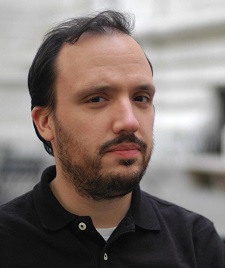

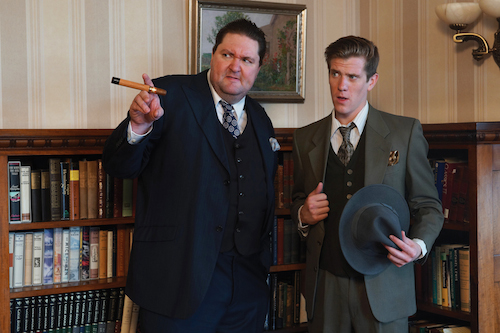
 Based on these choices, I decided that Wolfe’s office in the brownstone would be the sole setting. I shortened the time frame from a week to three days to heighten the tension. I eliminated several smaller characters and simplified certain aspects of the plot. I moved the action of one scene from upstate New York to Brooklyn because Archie could get to Brooklyn faster.
Based on these choices, I decided that Wolfe’s office in the brownstone would be the sole setting. I shortened the time frame from a week to three days to heighten the tension. I eliminated several smaller characters and simplified certain aspects of the plot. I moved the action of one scene from upstate New York to Brooklyn because Archie could get to Brooklyn faster. Joseph Goodrich talks process for his stage adaptation of Rex Stout's The Red Box.
Joseph Goodrich talks process for his stage adaptation of Rex Stout's The Red Box.
 Insignificant, you’d say. Well, yes, except there is a subgenre of mystery and crime films that miss the mark wide, shall we say, that are worth viewing in a Mystery Science Theater 3000 kind of way. Actually, Mickey Spillane is in two of these bad boys. In Ring of Fear, he gets second billing to Clyde Beatty as he plays himself called in by Pat O’Brien, the owner of the Clyde Beatty Circus, to investigate some shady doings at the circus. Then there’s The Girl Hunters, wherein Mickey plays his own famous PI creation, Mike Hammer. Girl Hunters does have a pretty good fight scene in a barn with the hero’s nemesis, The Dragon. The Two Jakes, the sequel to the near-flawless Chinatown belongs in this mish-mosh of Mondo Weird works, as well as the horrid butchery of the V.I. Warshawski movie starring Kathleen Turner.
Insignificant, you’d say. Well, yes, except there is a subgenre of mystery and crime films that miss the mark wide, shall we say, that are worth viewing in a Mystery Science Theater 3000 kind of way. Actually, Mickey Spillane is in two of these bad boys. In Ring of Fear, he gets second billing to Clyde Beatty as he plays himself called in by Pat O’Brien, the owner of the Clyde Beatty Circus, to investigate some shady doings at the circus. Then there’s The Girl Hunters, wherein Mickey plays his own famous PI creation, Mike Hammer. Girl Hunters does have a pretty good fight scene in a barn with the hero’s nemesis, The Dragon. The Two Jakes, the sequel to the near-flawless Chinatown belongs in this mish-mosh of Mondo Weird works, as well as the horrid butchery of the V.I. Warshawski movie starring Kathleen Turner.
 This racial crossing/obfuscating is another subgenre, a theme used in several mystery books and films. Devil in a Blue Dress comes to mind as does the little seen but intriguing picture Slow Burn. So as the octogenarian sex bomb Tempest Storm slowly and artfully removes her garments under the glare of the lights, I can’t help but reflect how her ex-husband, once upon a time, fandangled with the garments of race while the music played.
This racial crossing/obfuscating is another subgenre, a theme used in several mystery books and films. Devil in a Blue Dress comes to mind as does the little seen but intriguing picture Slow Burn. So as the octogenarian sex bomb Tempest Storm slowly and artfully removes her garments under the glare of the lights, I can’t help but reflect how her ex-husband, once upon a time, fandangled with the garments of race while the music played.

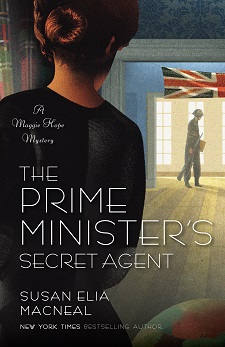

 I am also rereading Robert Graves’ two volumes of The Greek Myths. One can never read enough Graves.
I am also rereading Robert Graves’ two volumes of The Greek Myths. One can never read enough Graves.




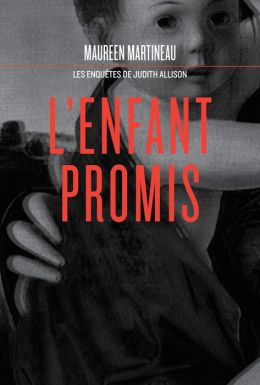
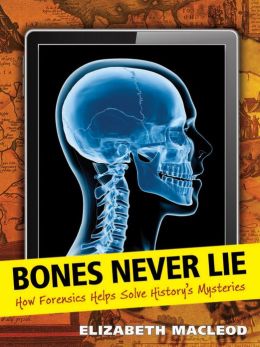
 GRAND MASTER AWARD
GRAND MASTER AWARD








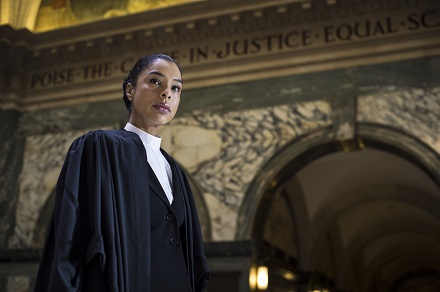








 As I grew older, I fell in love with books like The Secret Garden by Frances Hodgson Burnett and the Black Stallion series by Walter Farley. I think the “Stallion” books are why I’m still such an animal lover today. I was also a fan of Elswyth Thane, who isn’t well-remembered these days. Thane had a beautiful way of weaving romance, history, and paranormal elements into the most wonderful stories. I still get emotional when I think about her book Tryst.
As I grew older, I fell in love with books like The Secret Garden by Frances Hodgson Burnett and the Black Stallion series by Walter Farley. I think the “Stallion” books are why I’m still such an animal lover today. I was also a fan of Elswyth Thane, who isn’t well-remembered these days. Thane had a beautiful way of weaving romance, history, and paranormal elements into the most wonderful stories. I still get emotional when I think about her book Tryst. There’s definitely a direct line from those books of my youth to the fiction I’m writing today. Only now do I consciously realize that the The Happy Hollisters and the Haunted House Mystery, most of the Three Investigators books, and even The Hound of the Baskervilles explore the mystery subgenre of a supposedly supernatural crime being exposed by the forces of logic and reason. My books Beyond Belief and Deadly Visions tread the same ground. And our Kendra Michaels character (featured in the just-released Sight Unseen) certainly shares some traits with Sherlock Holmes, although she is a much more emotional being. We’re all products of our environment, even if that environment was partially created by authors in their wonderful books. We’d be thrilled if we could cast the same spell over readers who enter the worlds we create.
There’s definitely a direct line from those books of my youth to the fiction I’m writing today. Only now do I consciously realize that the The Happy Hollisters and the Haunted House Mystery, most of the Three Investigators books, and even The Hound of the Baskervilles explore the mystery subgenre of a supposedly supernatural crime being exposed by the forces of logic and reason. My books Beyond Belief and Deadly Visions tread the same ground. And our Kendra Michaels character (featured in the just-released Sight Unseen) certainly shares some traits with Sherlock Holmes, although she is a much more emotional being. We’re all products of our environment, even if that environment was partially created by authors in their wonderful books. We’d be thrilled if we could cast the same spell over readers who enter the worlds we create. The mother-and-son team look back on memorable reading experiences.
The mother-and-son team look back on memorable reading experiences.